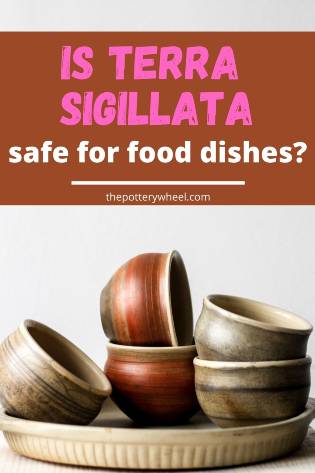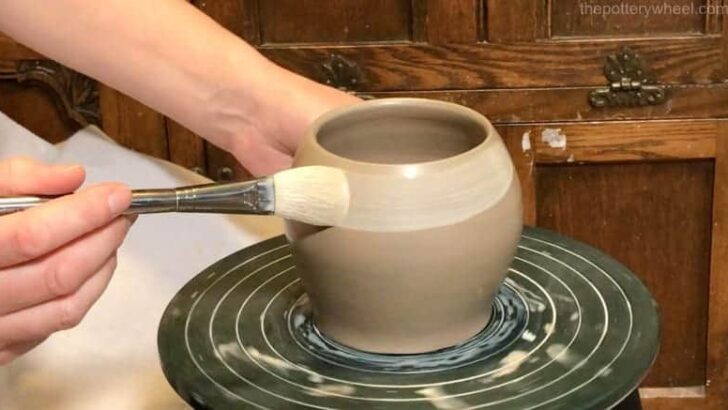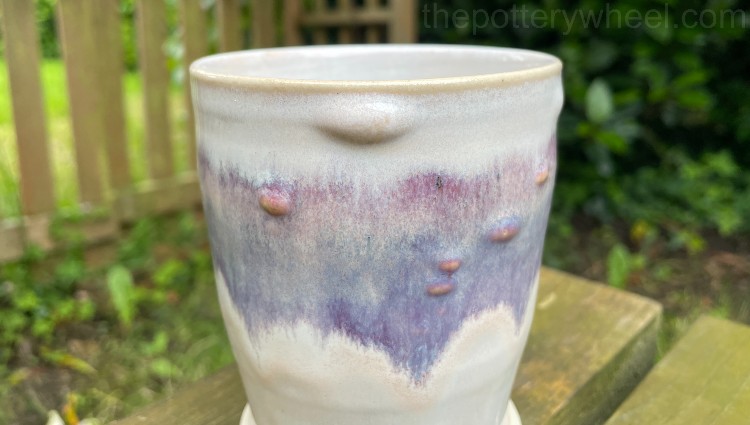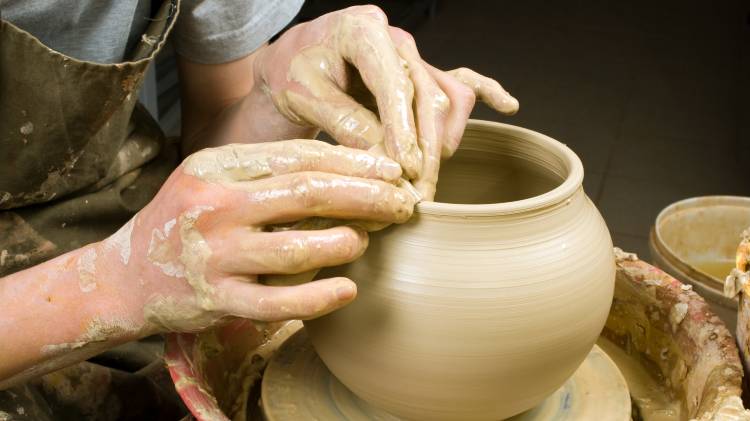Terra sigillata has long been in use by potters who continue to push the limits of what’s possible. This low-fire clay method is best applied when potters are trying to achieve a fine, smooth finish on the outside of their products without glazing. But then, that begs the question – is terra sigillata food safe?
Low-fired clay is generally more porous and is considered less food-safe than its high-fired clay counterparts. There are, however, arguments for how terra sigillata can be made from scratch to be a more functional piece of hardware.

The Important Things to Note
For a better understanding of the place of this pottery finishing step in food ware, there are a series of groundwork that we should lay first.
To start with is the method of applying terra sigillata to pottery.
There have been cases where the method has been used as a coloring technique for pottery made in otherwise high-temperature conditions. The temperature recorded here’s higher than what is obtainable for modern applications of the terra sigillata technique which is usually about 900 degrees Celsius.
That brings us to the modern applications of this pottery finishing. Its popularity is not only helped by the fact that the method makes beautiful products, but it is also less resource-intensive.
Preparing the terra sigillata might be time-intensive. Applying the material to the surface of the unfired clay and burnishing it there averages out the time and resources required to finish the process.
That said…
What Makes a Piece of Pottery Food Safe?
Pottery is made from clay – a part of the earth. The earth contains substances such as iron, lead, silicone, and other elements that could both be good and bad for the body in varying quantities.
That is why bodies like the FDA establish a test guideline for earthenware that will make its way to the kitchen table.
Combining actionable research from multiple sources, these are the factors to consider on food-safe pottery.
Surface
On a food-safe piece of pottery, all of the surfaces that come in contact with food must be buttery smooth without blemishes.
This means that there cannot be broken glassy surfaces, cracks in the material, or rough spots from texturing. Even if the pottery was fired right and ticked every other box, these cracks could serve as breeding spots for bacteria; contaminating the food and causing discomfort to the users.
Glazing
Glazing is very important in food-safe pottery, especially if the pottery is made from low-fire clay.
The glazing helps the clay to maintain a lower level of porosity. That said, the glazing has to be correctly fired.
When considering mid-fired and high-fired clay, unglazed surfaces might not cause a problem. As long as the clays themselves have been fired to their full maturity such that the clay particles fuse to form a waterproof surface.
Firing
Generally, low-fired clay is steered clear of when choosing food-safe material.
Even though it has been fired, it is usually not enough to reach maturity. In other words, the porosity becomes a cause for concern. Thus, fluids might still penetrate the surface and soak the clay.
Glaze Solubility
Glazing the pottery is not enough to ensure that it is food-safe. The kind of glazing is also an important consideration here.
Some types of glazing are soluble when they come in contact with different food items. While some glazes might react to acidic solutions more, others will start chipping away when in contact with alkaline substances.
Note that not all glazes are soluble at first. Sometimes, it takes repeated use, washing with strong detergents, alternate heating, and cooling, etc, to get them soluble.
How Food Safe is Terra Sigillata?
Referencing all that has been said up there, terra sigillata should not be considered a food-safe piece of pottery.
Like any other form of pottery, potters can play around with this method and might be able to make one that is food safe enough. In general, though, you should not rely on them for functional kitchen purposes.
You can still get terra sigillata pottery to keep items in, for mere decoration, or anything else that you see fit. It would be best to leave it out of your kitchen, though.
Do the Test Yourself
You don’t have to take my word – or anyone else’s for that matter – for it.
Run some quick tests on the various aspects of the clayware tying directly into food processing.
Some of the important tests are:
- Alkalinity Test – mix 50 grams of dishwashing liquid to about 1 liter of water and boil. Take the pottery and place it in the boiling mixture, turning the heat down to a simmering temperature now. Leave for about 6 hours. After the test period, see if the pottery retains its color and shine. Otherwise, it is susceptible to alkaline substances.
- Acidity Test – take a slice of lemon, gently squeezing it to stimulate the flow of juices. Place the lemon slice on the glaze over 24 hours. If the color changes, the pottery has failed the acidity test.
- Microwave test – put some water into the test piece and let it sit in your microwave for about one minute. If the clay isn’t vitrified enough, the water would have expanded into the body of the clay, making the pottery very hot. That clay is not food-safe.
There are a host of other methods you can use to check the safety of your clay kitchen utensils. The above is, however, simple enough for anyone to carry out.
Final Thoughts
Making terra sigillata food safe has been the core focus of some potters for a while now. Striking the balance between making highly functional potteries with this beautiful finish does not come easy, but it does get done.
That, however, does not mean that you should take the word of any potter for it when buying.
The basic process behind terra sigillata does not qualify for food safety. To turn the tables will be to apply the finishing method in different ways – maybe to already high-fired clay or in any other variation that meets food processing standards.




